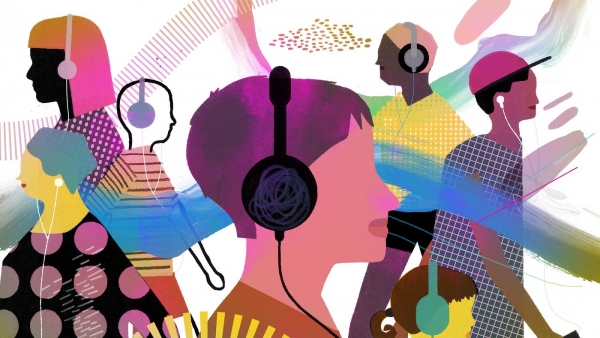Incorporating music into your world language classroom is a simple and engaging way to expose students to the culture(s) associated with the target language. Not only does it pique student interest, but also it aids in creating an upbeat and positive classroom environment.
Songs are examples of authentic resources that can lead to a variety of different activities at all levels. From an instructional standpoint, homing in on specific songs and their lyrics builds students’ listening comprehension skills. When listening to a song, students are exposed to rich vocabulary and cultural content. Rather than a standard audio clip, students are following a story out loud. This is more likely to hook their interest and attention.
CHOOSING APPROPRIATE SONGS
Try picking a song that directly aligns with a theme or topic covered in your unit. For example, you can pick a song that relates to the content you’re covering, or you can choose a song that focuses on a grammatical point that you want your students to practice in context. You can also choose a song that does a little bit of both.
The song “Ella,” by Alvaro Soler, contains examples of the imperfect subjunctive, a grammatical structure that I focus on with my intermediate learners in Spanish IV. In addition to noting and practicing examples of this grammatical structure in context, I go beyond this. I have students identify the main idea of the song as well as share whether they like it or not and why.
It’s important to preview lyrics and music videos beforehand to screen them for inappropriate content; if the music video is school-appropriate, show it to the students as they listen to the song. Likewise, you can have students read through the singer’s biography to learn more about their background. The students can make comparisons between this artist and one that they listen to on a regular basis. At this level, the students can also identify the genre of the song and share their preferences and opinions about it.
With my beginners in Spanish I, I like to expose students to geography to better familiarize them with the countries that make up the Spanish-speaking world. The song “La Gozadera,” by Gente de Zona featuring Marc Anthony, zips through all of the Latin American countries. I give students a blank map and have them label the countries as they hear them in the song. I also expose students to each country’s flag as a means to practice colors and broaden their cultural knowledge.
A song that can provide rich vocabulary exposure and inspiration at any level is “Vivir Mi Vida,” by Marc Anthony. This song contains a multitude of verbs, specifically in the infinitive form. It’s a feel-good song that offers positivity and words of wisdom. Its catchy beat makes it easy to sing along to; having students sing karaoke is always an option, as there are tons of karaoke videos on YouTube.
FRIENDLY COMPETITIONS AND SING-ALONGS
Lyrics Training is a useful website when exposing students to songs in the target language. On this website, students fill in the lyrics as they listen to the song and watch the music video. They can compete against each other, and there are different levels of difficulty available. With the help of the site, students can learn every word to a song in a fairly short time. This can lead to a whole-class sing-along or to sing-along competitions between different class periods.
Creating a cloze activity in which students listen and fill in the blanks is another option for any song. It’s important to note that not every song needs to have an instructional purpose. Consider creating a class playlist via Spotify or YouTube, and play music throughout the day.
As students are walking in and completing a do-now activity, have music playing. If they’re working on a project or activity, play some music again! You will be impressed by how many of your students start following your playlist—the best part is, they might even start to listen to songs in the target language on their own time.
A common goal of world language teachers everywhere is to have our students use the language in their real lives and to appreciate and value cultures different from their own. Music can help to achieve these goals and can contribute to a positive language learning experience for all.
By Elena Spathis







